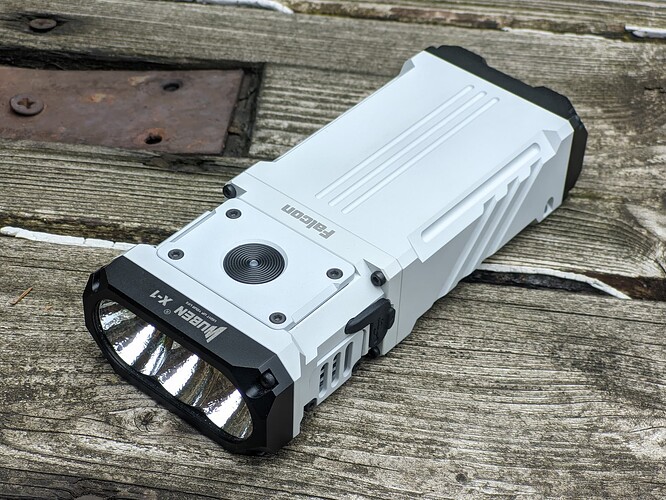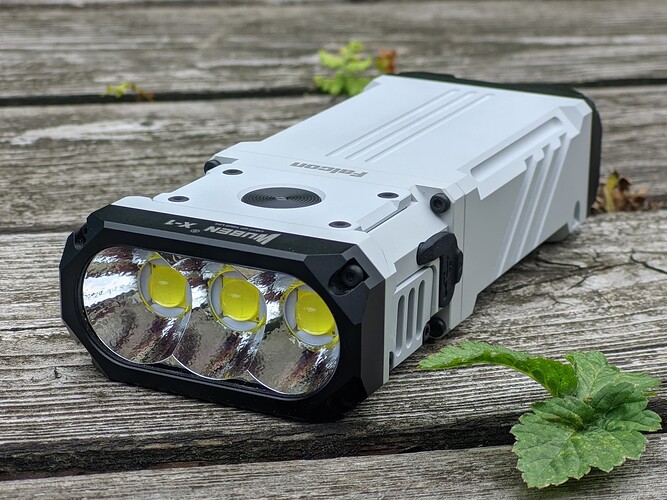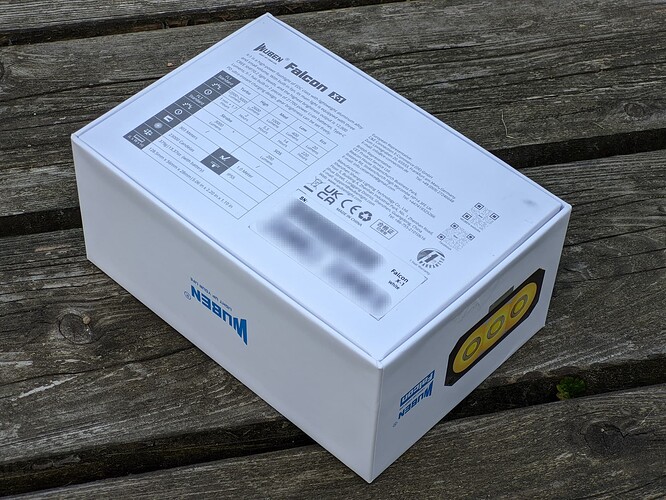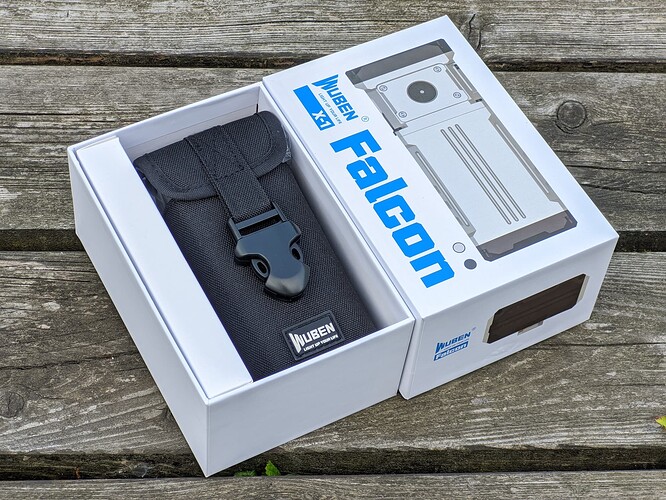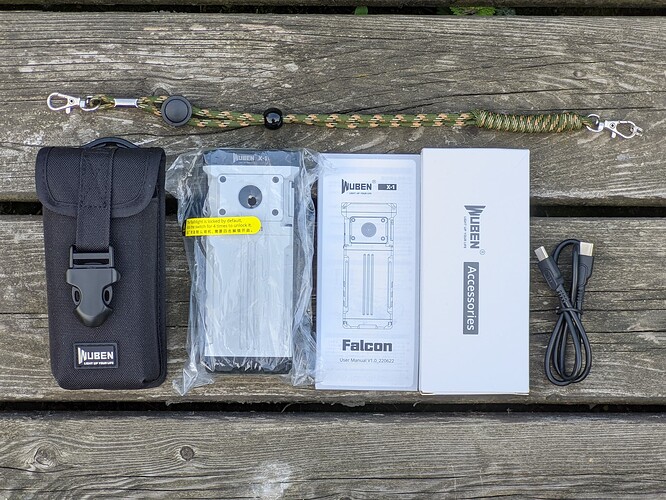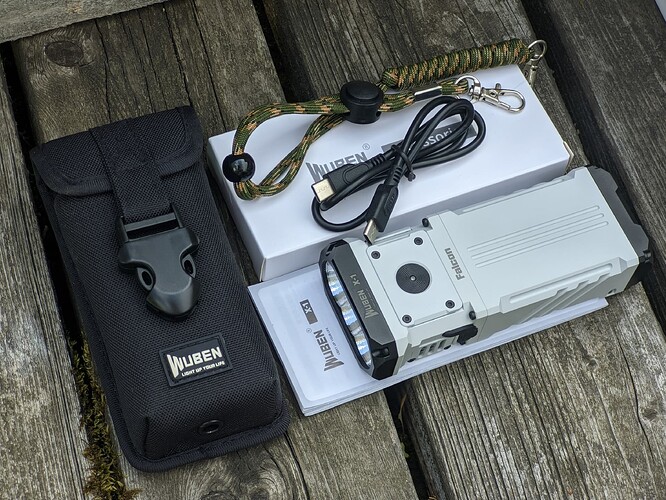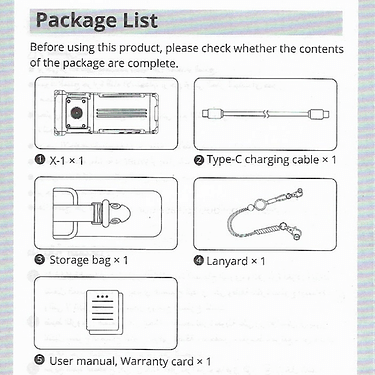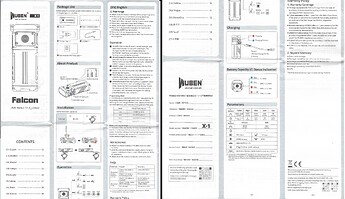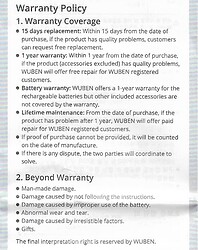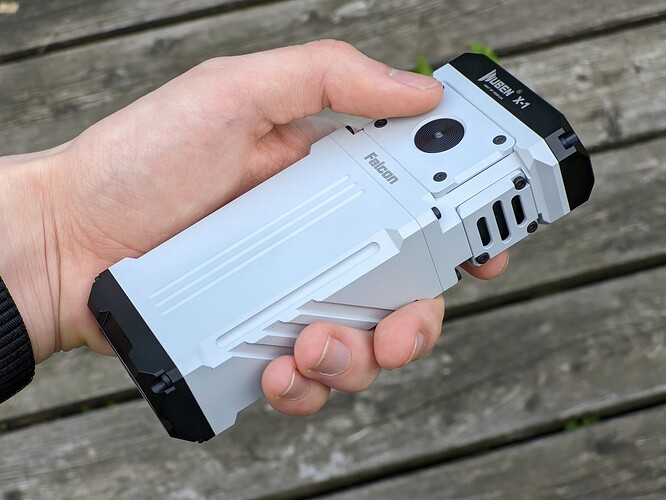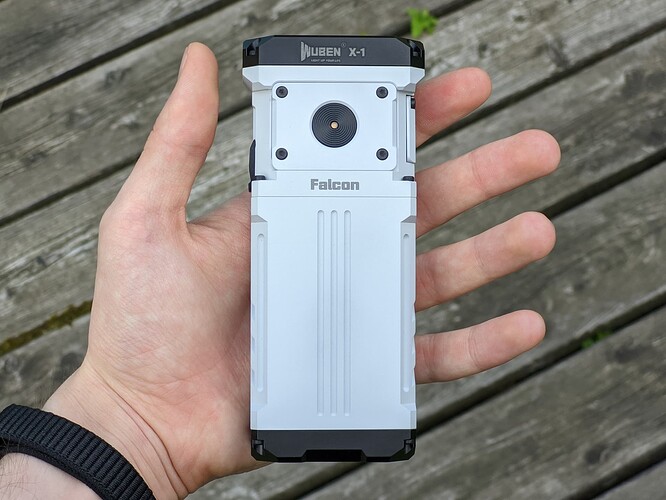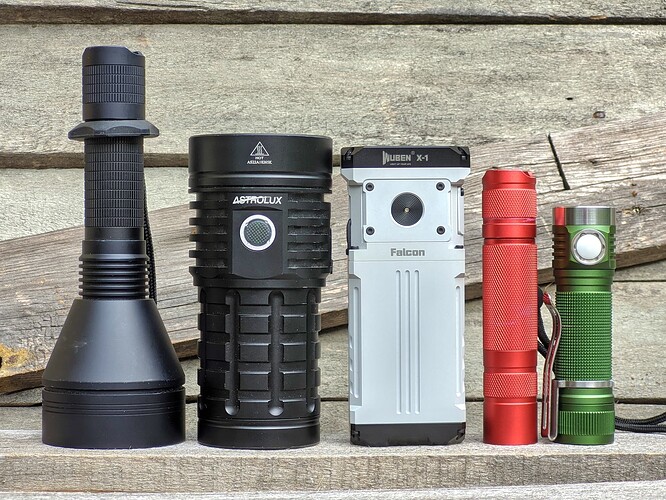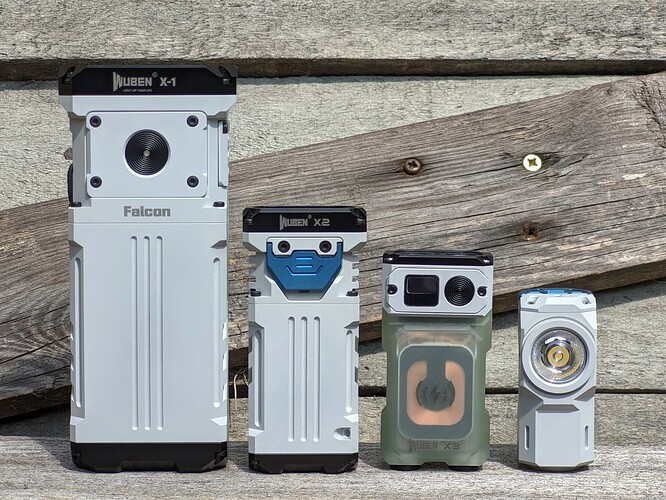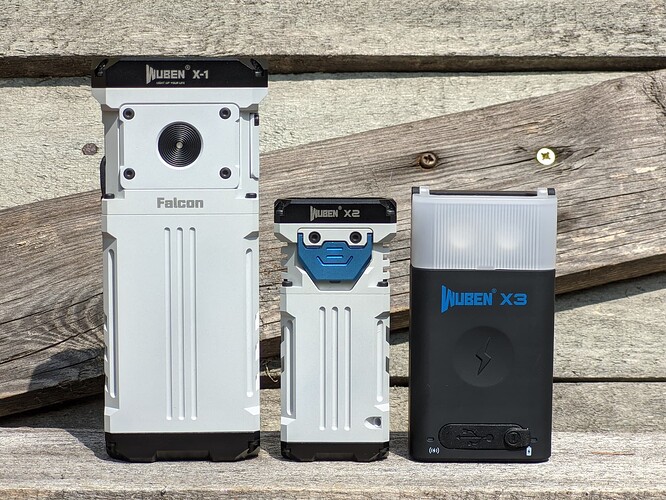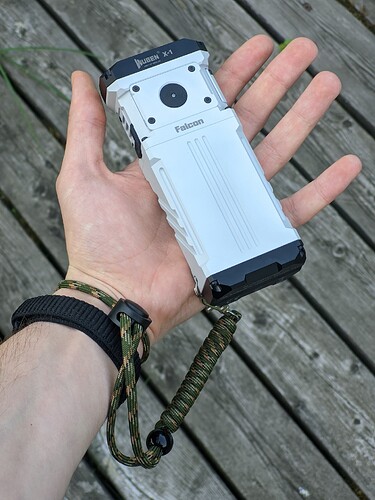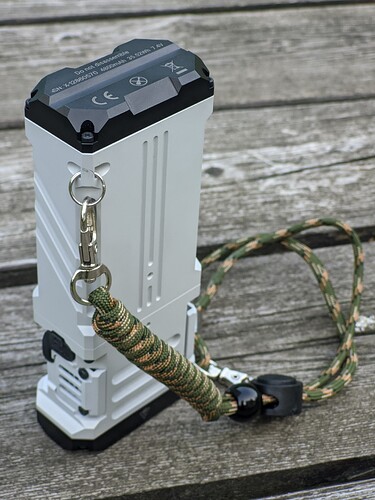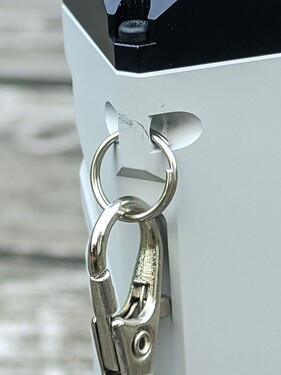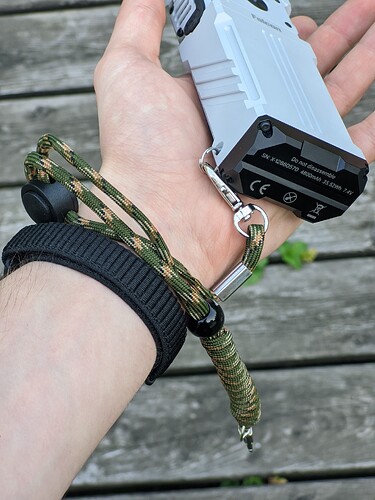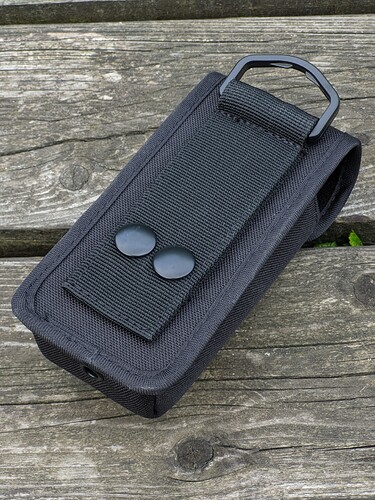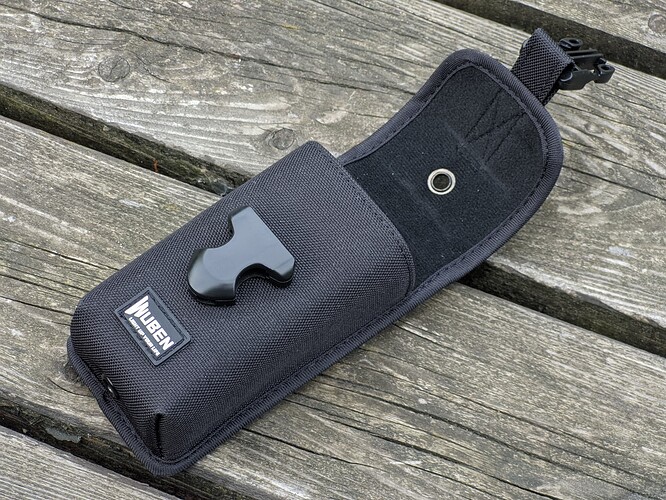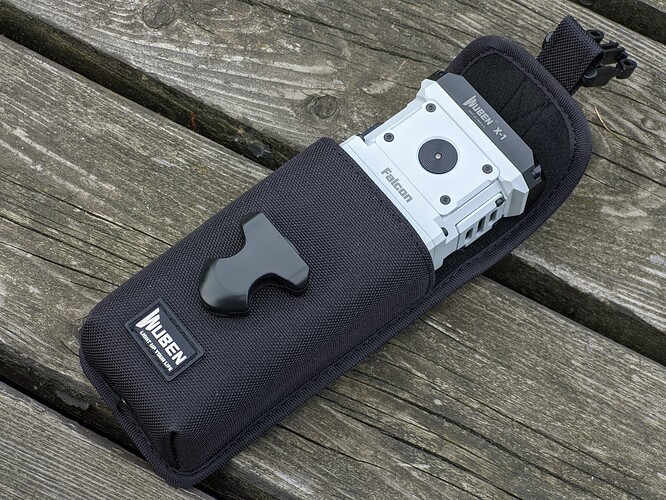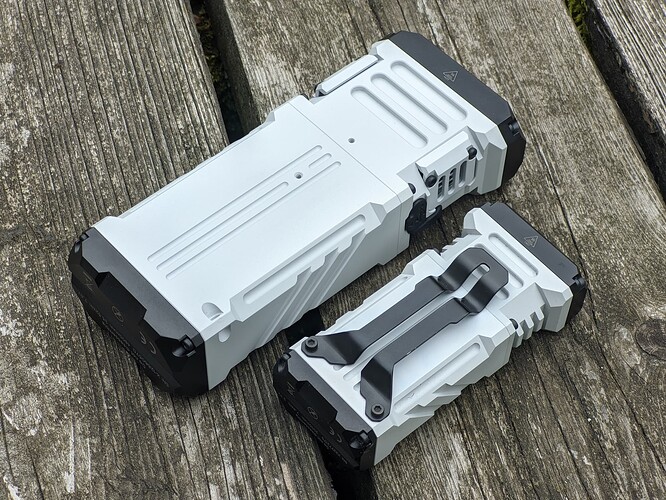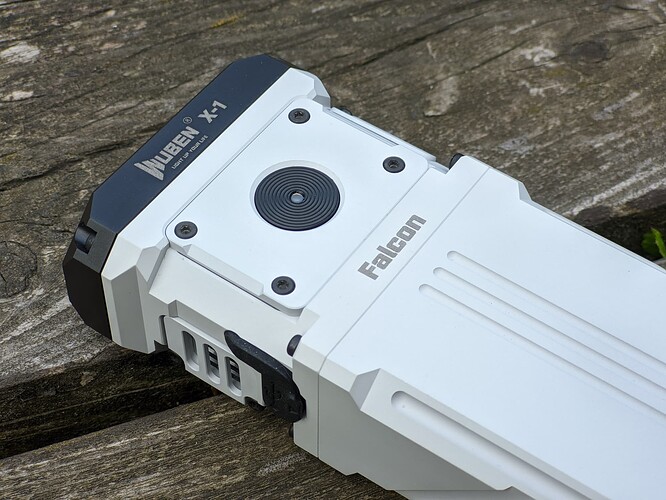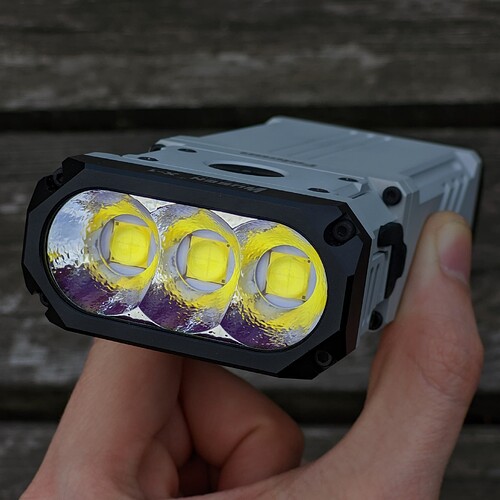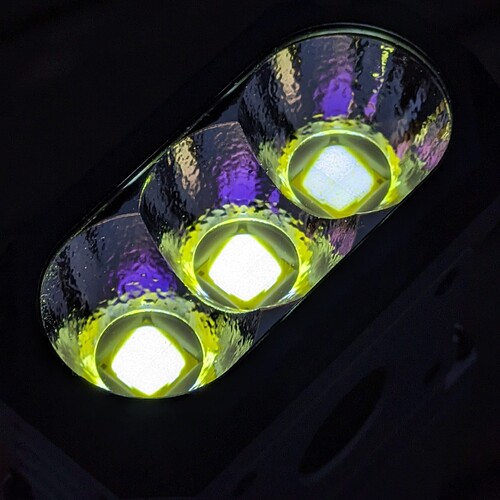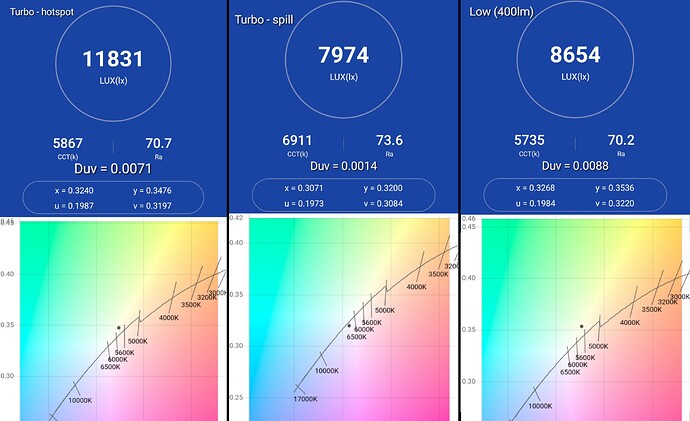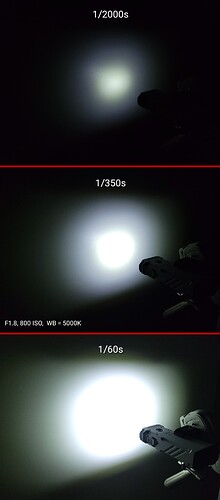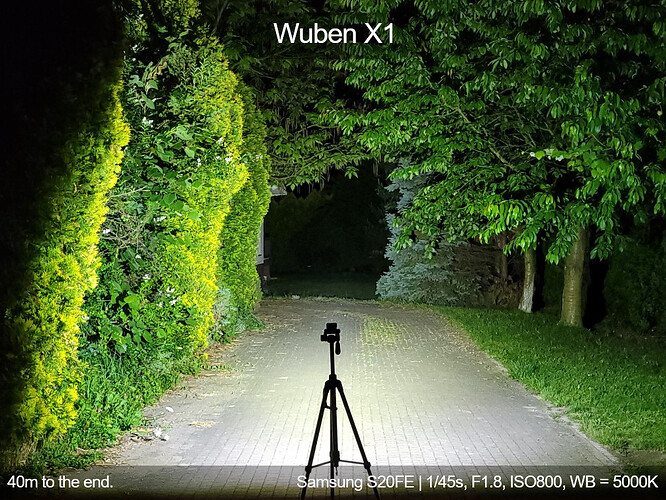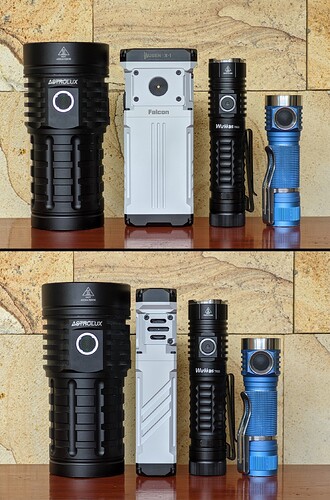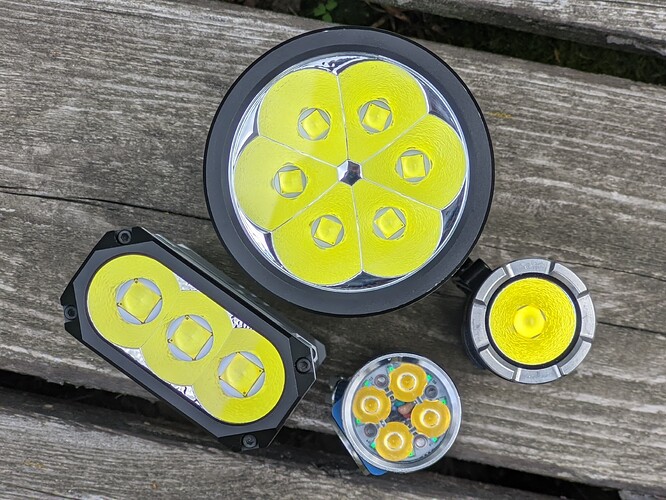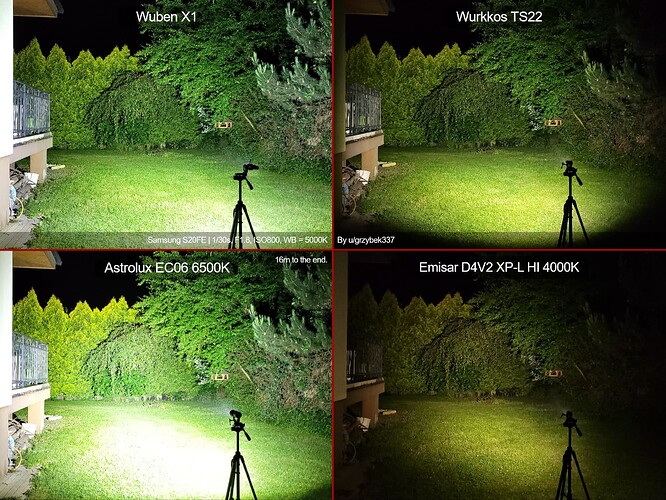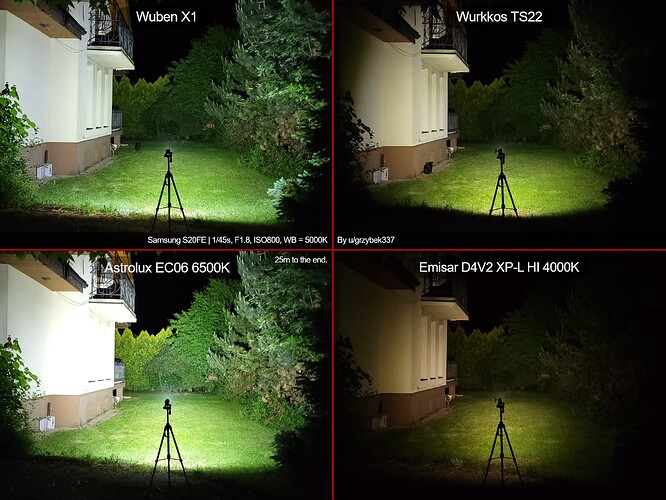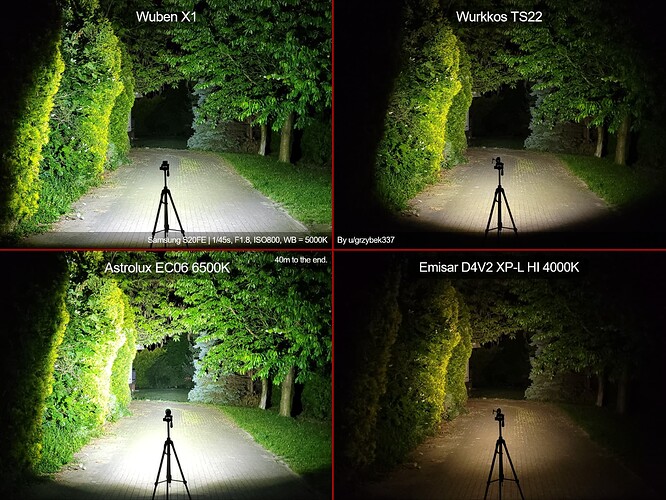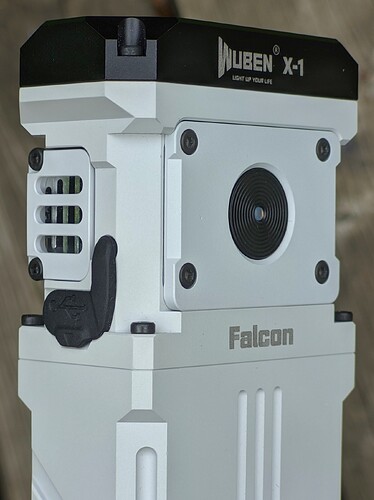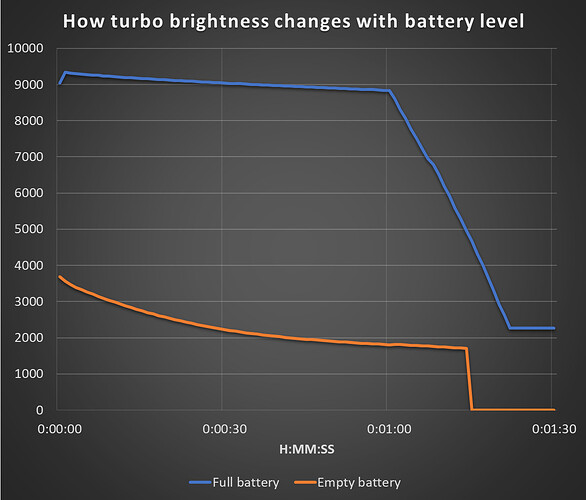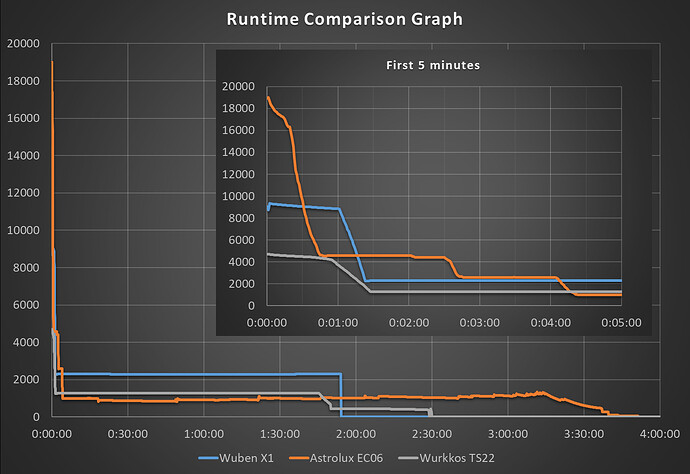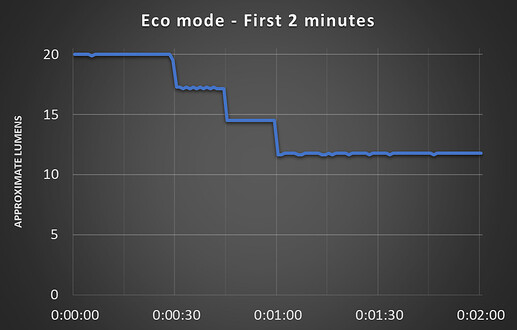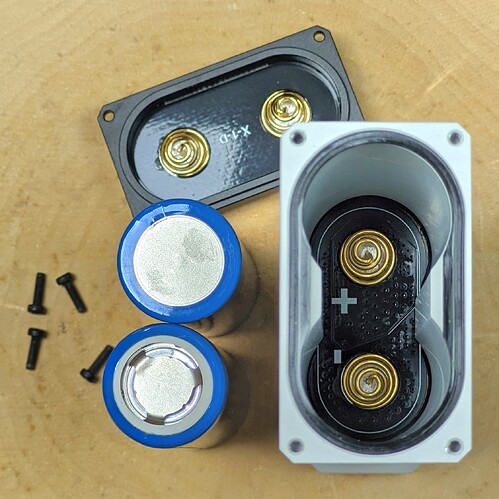Disclaimer: This flashlight was send to me by Wuben free-of-charge for review. I don’t earn any money from the sale of Wuben products.
Did you ever need a powerful flooder, but every flashlight was either too bulky or overheated too quickly? Well, if that’s the case, you might want to take a look at the Wuben X1.
Manual
Warranty info:
The X1 has a rectangular body shape and is comfortable to hold. The cutouts on the body definitely improve the ergonomics.
This unusual shape helps it out a lot when it comes to pocketability. With a standard flashlight, the width of the bezel is often the limiting factor when it comes to where you put away your flashlight.
To put things in perspective, here are some average bezel diameters for different flashlights:
15-24mm – AAA/AA lights
24-35mm – 18650/21700 lights
60-70mm – 4x18650/3x21700 lights and some throwers
The X1’s head has dimensions of 56mm x 28mm, so it can easily fit even into a jeans pocket.
I took it on a trip to southern Europe and could comfortably throw it in my backpack while we were going around cities and landmarks. Takes up about as much space as a 20Ah powerbank, so it’s not too bad.
The X1 is also available in black anodization.
On turbo, it lights up the near surroundings evenly and doesn’t overheat too quickly. Seems to perform well for its size.
The X1 measures:
• Length: 130mm
• Body width: 50mm
• Head width: 56mm
• Thickness: 28mm
• Weight: 386 grams
Compared to other lights:
L to R:
Convoy L21B, Astrolux EC06/Sofirn Q8 Plus, Wuben X1, Convoy S2+, Emisar D4K
Compared to the X series Wuben lights
L to R: X1, X2, X3, X0
The X1 comes with a lanyard and a holster.
The lanyard attaches with a keyring onto the lanyard hole. Keep in mind that attaching the keyring might scratch the white coating (perhaps I wasn’t careful enough).
To avoid this, you can always use a standard lanyard with a string (if you have any, that is), instead of a keyring.
The lanyard can also be attached the other way around, decreasing the distance between your hand and the flashlight, but attaching it like this causes the other end to dangle around, which some may find annoying.
I’m not a big fan of this lanyard. It feels cheap and not on to the same level as the rest of the accessories.
Now, moving onto the holster, I didn’t expect it to like it as much as I do. It’s quite convenient and well thought out.
The flashlight slides in and the flap closes with a satisfying click. The holster seems designed specifically for this model, unlike some other brands’ holsters that are made to fit multiple sizes (which isn’t a negative thing, but it’s nice to have something “custom” made).
There is also a bike mount available for the X1, bought separately. AT2X - bicycle mount for X1 - Wuben Flashlight , https://www.amazon.com/WUBEN-T5US-X1-AT2X-X1-Bike-Clip/dp/B0BRXG1FMM
The only additional thing that I’d like to see is a clip, like on the X2.
It fits my jeans pocket, so I don’t see why some people wouldn’t carry it this way. For that type of carrying style, a clip prevents the flashlight from going too deep into the pocket or rotating to the side. It would also be nice if I could just clip it to my belt, without the holster.
But keep in mind, it could be a bit heavy for carrying in a jeans pocket. More of a jacket pocket/belt light, I’d say.
The switch is a plastic disc with a LED indicator in the middle. It’s not the best e-switch I’ve ever tried, but not the worst either. Slightly mushy. It has a weird popping sound when you let go.
I have talked with other reviewers and their models either make a similar sound, or do it less often than mine. Video below:
It doesn’t affect the functionality at all, but I find it a bit annoying.
Right after turning the flashlight ON, the LED switch indicator will show the battery status.
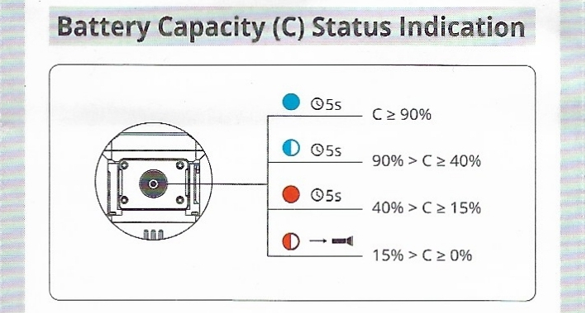
The UI is quite simple and intuitive.
The UI also features mode brightness configuration. You can modify the brightness of each mode to match your preference. Sadly, we can’t modify the amount of modes like in Anduril UI, but this is better than nothing by a large margin.
Each mode can be adjusted in the brightness bracket as shown below:
One of my complains about this UI is the lack of moonlight mode. Eco is 20 lumens, which is fine considering mode spacing, but I’d like to see a proper moonlight mode (1lm or less) added, that’s only available with a hold from off and not in the main mode rotation
Moonlight mode is great when you want to use your flashlight at night and not mess-up your nightvision. Such low output will also drain the battery incredibly slowly, which would be useful in emergencies.
The X1 uses three XHP70.2 emitters.
The screws on the head can be unscrewed to get easy access to the MCPCB. It’s popular to swap these LEDs to the CREE XHP70.3 HI for the lack of tint-shift and slightly better throw.
CCT and tint measurement:
A good way to determine the beam profile of a flashlight is to divide its candela (cd) by the lumens (lm) it produces. In return, we will get the cd/lm ratio. Here’s an approximate scale of what those values mean:
- 0.1 cd/lm: light bulb
- 1-3: flooder
- 5-15: balanced EDC-style beam
- 30: compact thrower
- 100: dedicated thrower
- 500+: extreme thrower
- 10000: laser
X1 has 2.5 cd/lm , which means it has a very wide beam profile and can flood a wide area with light quite effectively.
Below I will compare the X1 to some other flashlights that I found suitable for the comparison.
Flashlights, L to R: Astrolux EC06, Wuben X1, Wurkkos TS22, Emisar D4V2
The Wuben X1 uses a fan to help with temperature management. It turns on when the flashlight heats up and stays on as long as the flashlight is turned on and hot.
The fan will spin even in Eco mode if the flashlight is still hot.
Here are the X1 specifications given by the manufacturer:
Throw (range) measured:
| Mode: | Candela | Throw |
|---|---|---|
| Turbo at 30s, | 24336cd, | 312m |
Runtime graph:
The X1 uses a timed stepdown at about 1 minute. The fan seems to turn on after 25 seconds.
To test the regulation of the driver, below I compared Turbo brightness when turned on at fully charged battery and after I fully drained it.
+3000 lumens at pretty much empty battery is quite impressive.
Runtime compared to other lights:
Even thought the EC06 is much bigger and has more cells, the X1 sustains twice the output. The EC06 had a thermal limit set of 50C.
An unusual thing I noticed while taking beamshots is that the Eco mode steps down after about 30 seconds. Really weird behaviour.
The stepdowns seem to be timed too. The only logical reason I can think of why this is, is to prolong the advertised ANSI runtime of the Eco mode. Unusual but… weirdly welcome?
The Wuben X1 uses 2x 21700 4800mAh cells in series, which gives it a total of 9600mAh or 35,5Wh of battery capacity.
Sadly, because of how the cells are mounted in the flashlight, we are preventem from “quick swapping” the cells for freshly charged ones. The cells aren’t easily accessible, but the can be replaced if required.
To access the cells, unscrew 4 screws on the tailcap (doing this might void warrant). When unscrewing the screws, hold the tailcap down as the battery springs push at the tailcap with a lot of force which could strip the screws.
From what I can see, the cells aren’t balanced. I was informed that Wuben precisely matches the cells at the factory to ensure they do not become imbalanced. If you ever was to replace those cells, make sure to put in matched cells too, or you risk an explosive hazard. It would still be nice if we saw a balancing circuit here, but I guess it’s not strictly necessary.
The X1 is designed to be charged using the integrated USB-C port behind a rubber cover.
The LED switch indicator will light up when charging.
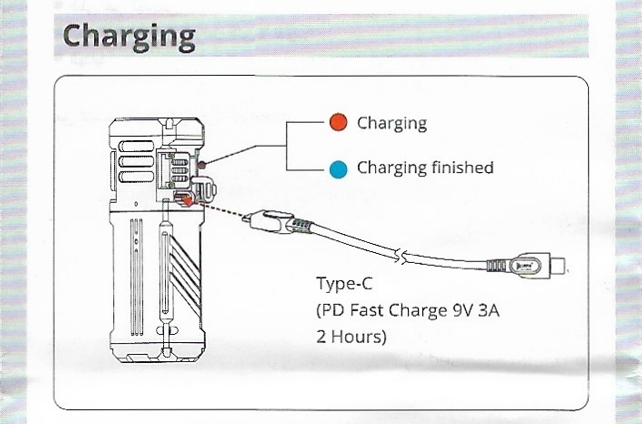
This photo was taken in a bit too brightly lit enviroment. In real life the charging indicator is well visible.
The flashlight didn’t want to charge my phone with a USB C-C cable, so I’m guessing it doesn’t have powerbank capability, which is a shame.
-
Sofirn Q8 Plus/Astrolux EC06 – Cylindrical soda-can style flashlight with 3x21700 cell configuration. Heavier, better range, overheats faster, lower sustained output, worse regulation/driver, less expensive, more complex Anduril 2 UI.
-
Nitecore TM10K – Smaller, 1x21700 (1/2 the battery capacity), has a clip, display, 2 switches, extremely fast turbo stepdown, lower sustained output, much more expensive.
-
Wurkkos TS22 – A more traditional cylindrical 1x21700 flashlight, efficient driver, very floody, smaller, lower maximum and sustained output, can be used as powerbank, less expensive, auto-lockout, mushy switch.
The Wuben X1 is definitely a strong competitor in its category. The rectangular shape makes it easier to carry on your person compared to a soda-can light. The wide high output beam floods all near surroundings evenly with light. Active cooling helps to keep the temperatures down, which in turn gives us long lasting turbo and high sustained output.
It has a few caveats, like the hard-to-get-to cells or the poppy switch, but it’s overall a great flashlight.
The Wuben X1 is available for purchase at: EDC Flashlight, Ultralight Outdoor Lifestyle | Wuben Official Store (affiliated link)*
Wuben has also given me a discount code: GRZYBEK for 10% off.




